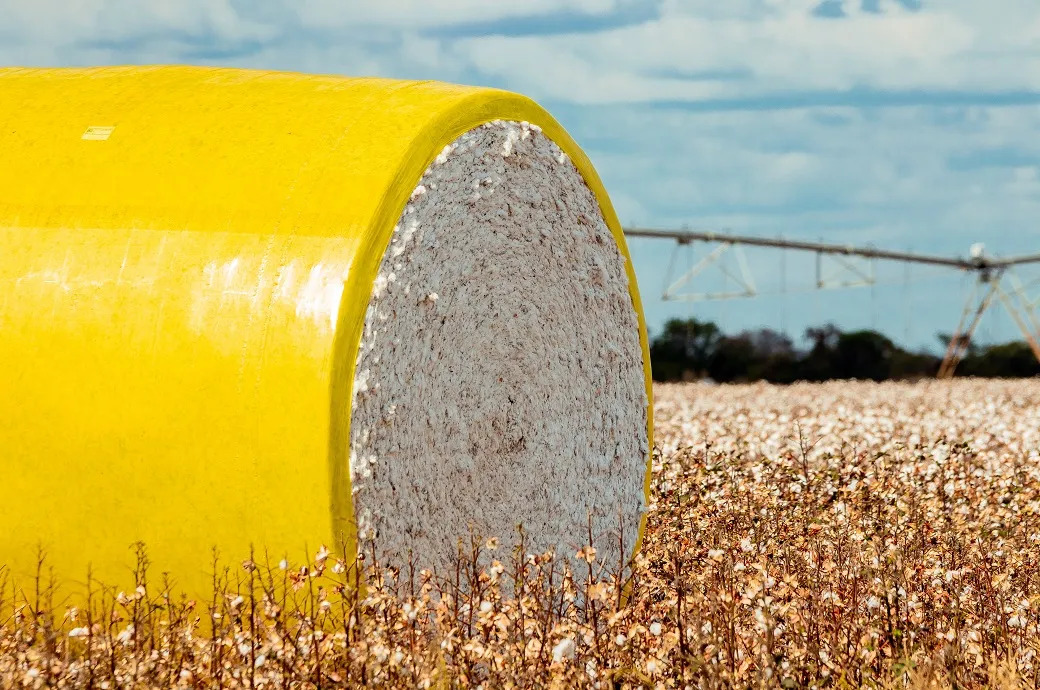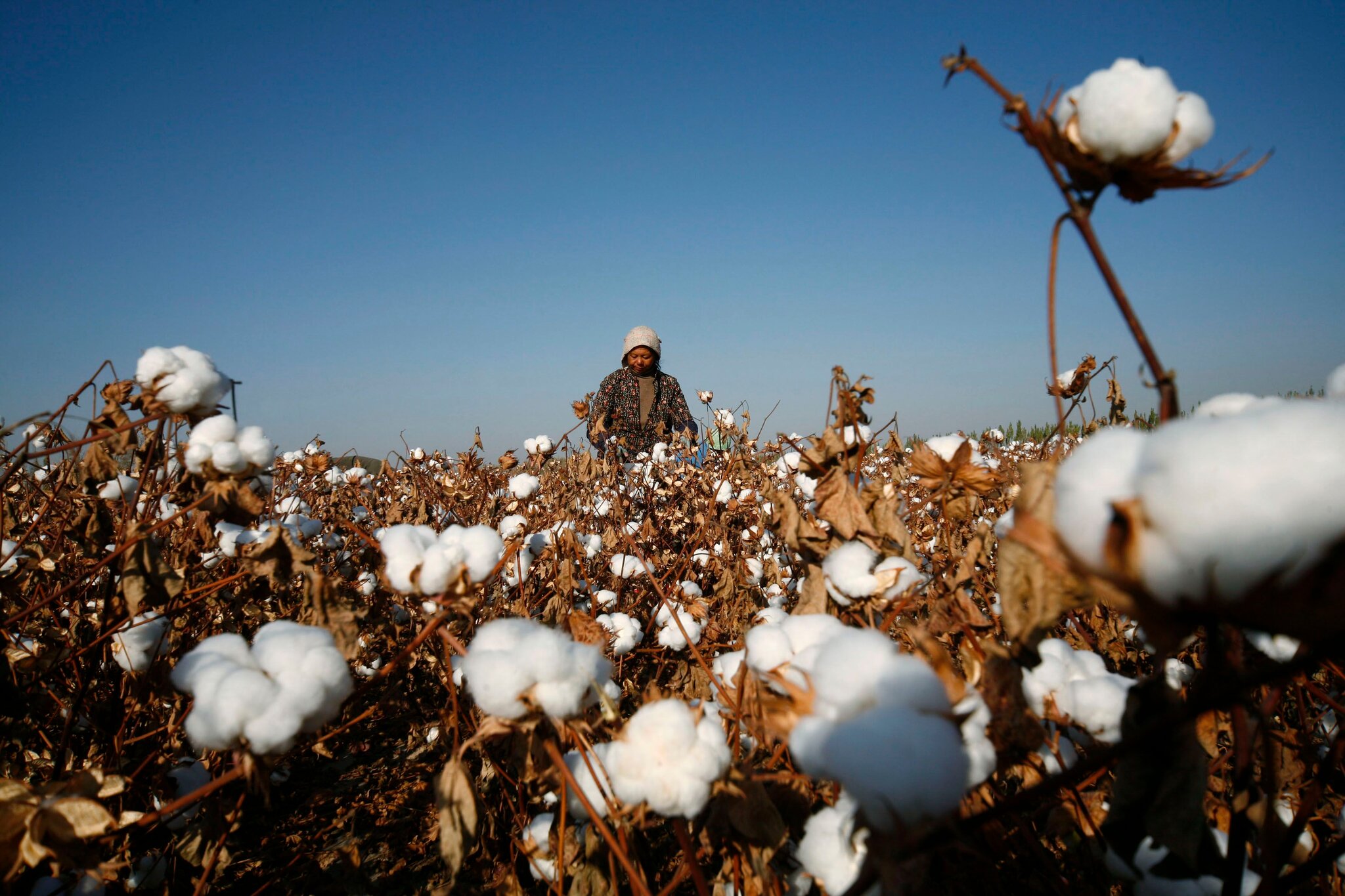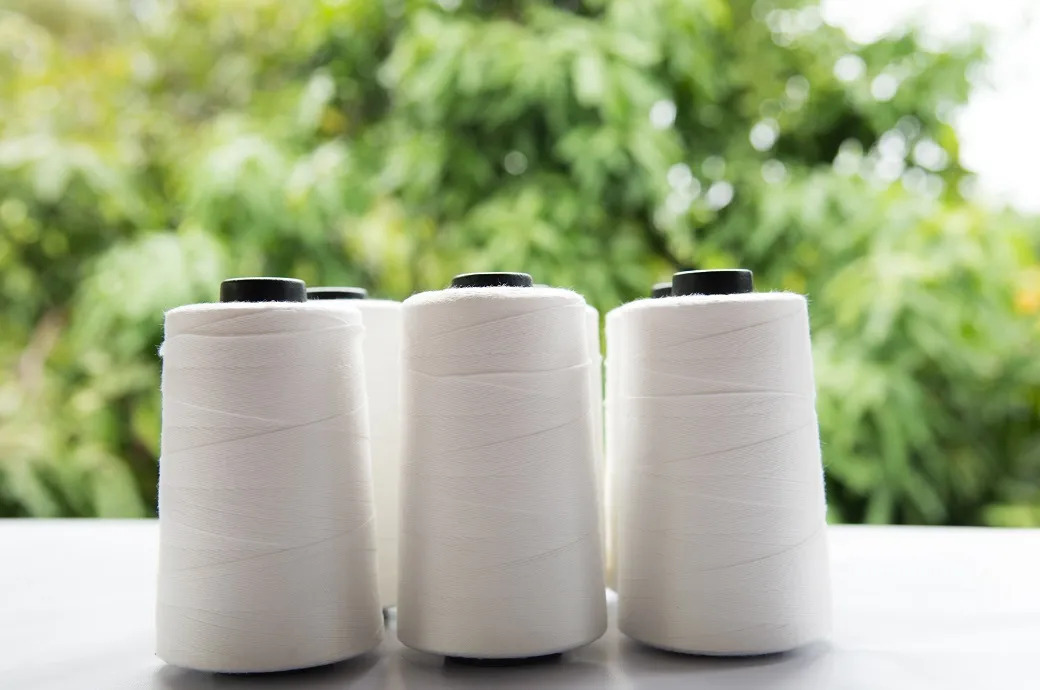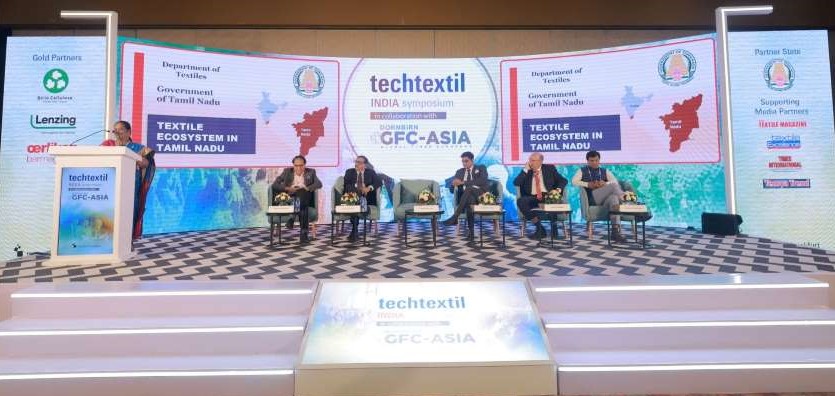FW
The closure of over 200 garment factories, primarily small knitting and dyeing units, across Narayanganj has triggered a socio-economic disaster, transforming a labor crisis into an alarming law-and-order threat. With up to 50,000 workers estimated to be jobless, authorities are linking the mass unemployment to a sharp increase in theft, drug trafficking, and petty crimes.
Narayanganj is a crucial specialized node within Bangladesh's Ready-Made Garment (RMG) sector, an industry that dominates the nation's economy and contributes over 80% of its export earnings. The factories shut down largely focus on high-volume knitwear and dyeing, supplying essential product lines to major global brands. Factory owners, struggling to survive, blame the crisis on a combination of external and internal pressures. They cite "unethical buying practices" by international retailers who exploit suppliers by demanding short sales cycles and refusing to pay fair, full prices. Simultaneously, they face crippling domestic costs, particularly utility inflation, including a recent 33% gas price hike that decimated operating margins for the energy-intensive dyeing and processing plants. This domestic cost pressure, coupled with a persistent global order crisis, has made these smaller, less-resourced factories financially untenable. While the broader national RMG market is forecast for growth, the closures reveal a major rift: larger, technologically advanced, and green-certified factories, which benefit from a reduced 10% corporate tax rate, are absorbing market share and concentrating wealth, effectively pushing the smaller, less compliant units toward systemic collapse. The government's future-focused industrial plan prioritizes automation and efficiency over pure wage arbitrage, a transition that has severely disadvantaged the massive, unskilled workforce that is now on the streets.
Shein has postponed the rollout of five new concession stores across France, a strategic reversal prompted by customer backlash over unexpectedly high prices at its flagship Paris outlet. Department store operator, Société des Grands Magasins (SGM), announced the delay, aiming to "get around the table, improve the range, expand the spaces, and offer lower prices" for future locations. The decision follows a case study in Paris where in-store items, such as faux leather shorts priced at €41, were likened to Zara's premium range, confusing shoppers accustomed to Shein’s ultra-low online pricing.
This omnichannel hurdle is complicated by a severe regulatory environment. France is leading the charge against ultra-fast fashion, recently passing legislation that includes escalating environmental fees, up to €10 per item by 2030, and a blanket advertising ban. These challenges directly threaten the Chinese giant’s core C2M (Customer-to-Manufacturer) model which drives its profitability through rapid, algorithmically-driven, low-cost production.
Despite the European friction, Shein's growth plan remains aggressive. The company, which dominates the Gen Z market with millions of styles and is transitioning into a global marketplace for third-party sellers, projected ambitious financial performance, targeting $2 billion in profit and $58.5 billion in annual revenue by 2025. The French debacle underscores the central challenge facing Shein’s physical retail initiative: can the brand maintain its rock-bottom pricing identity while complying with stringent European sustainability laws?
The grand opening of the 80,000 sq ft Marks & Spencer flagship store at Cabot Circus marks a crucial moment, not just for the retail giant, but for the future health of Bristol's city centre high street. The £21 million investment signals a definitive shift in M&S's strategy and a massive vote of confidence in physical retail, four years after its previous Broadmead branch closure.
The new three-floor store, which has replaced the former House of Fraser anchor unit, is a key piece in M&S’s national 'store rotation' strategy—an ongoing plan aiming for 180 modern full-line stores across the UK by FY 2028. This move tackles the challenge of modern shopping habits head-on, focusing on an immersive, quality-led experience over outdated, expensive legacy stores.
New model, new momentum
The Cabot Circus store is a living case study of this new model. It combines a huge, modern 17,000 sq ft market-style Foodhall with a sprawling Fashion, Home, and Beauty offering, including one of the retailer's largest in-store beauty sections. The addition of a 200-seater Coffee Shop emphasizes the shift toward destination shopping—giving customers a reason to visit and stay longer.
For Bristol, this is a much-needed injection of life and optimism. The store is expected to attract an estimated extra one million customer visits to Cabot Circus annually, according to the centre's owner, Hammerson. This boost in footfall is critical for surrounding businesses in the city centre, which have faced challenges from online competition and the closure of major department stores.
Regional Manager Ali Ivery underscored this sentiment, stating: "Bristol, we are back. Our Cabot Circus flagship will be one of the most modern stores in the UK... It’s fantastic to be making such a significant investment in the city." The store has also created over 150 new local jobs, providing a welcome boost to the local employment market in the run-up to the crucial festive season.
The challenge ahead
Despite the celebratory queues for the opening, the long-term challenge for M&S and Cabot Circus remains: sustaining this city centre momentum against the backdrop of changing consumer spending and the continued success of out-of-town retail parks like The Mall at Cribbs Causeway. However, the store's central location, accessibility via public transport, and commitment to a comprehensive, high-quality offering—including products from over 1,200 Select Farm partners in the South West; positions it as a powerful anchor in the battle for the city's shoppers.

November 12, 2025, could go down as a watershed date in India’s textile history. In a single day, the government announced two transformative measures, a decisive rollback of Quality Control Orders (QCOs) on key man-made fibre (MMF) inputs and the approval of a massive Rs 45,060 crore export promotion package. Together, these steps are being hailed as the long-awaited ‘big bang’ reforms that could redefine India’s global textile competitiveness.
Industry veterans such as the Southern India Mills’ Association (SIMA) and CTA Apparels have called the move “transformational,” arguing that these policies could finally bridge the decades-old gap between India’s raw material costs and those of global competitors like China and Vietnam.
QCO Repeal: Unlocking the fibre advantage
For the MMF sector, which commands nearly 70 per cent of the global textile market, the removal of QCOs on polyester fibre, yarn, and filaments marks a critical turning point. The now-rescinded QCO regime had unintentionally throttled India’s competitiveness by restricting the import of specialized fibres, forcing manufacturers to rely on costly domestic options.
What QCO removal means for the industry
This reform addresses the single most critical bottleneck in the MMF value chain cost inefficiency. By permitting open imports, Indian mills will finally have access to fibres on par with global pricing, enabling them to compete in both cost and quality. For domestic consumers, it translates to more affordable synthetic apparel.
Level playing field: The rescission, effective from November 12th, 2025, addresses a long-standing demand, ensuring the availability of fibres at internationally competitive rates.
Cost efficiency & price reduction: Competitive imports are now expected to stabilize domestic prices, easing cost pressures on downstream manufacturers and leading to a reduction in the price of polyester-based garments for domestic consumers.
Preventing NPAs and job retention: This timely initiative is expected to help prevent the closure of several powerloom units that were on the verge of becoming Non-Performing Assets (NPAs) due to the shortage of competitively priced fibres.
“This path-breaking reform marks a significant milestone in positioning India as a global hub for man-made fibre-based textiles and apparel,” says Durai Palanisamy, Chairman of SIMA. He further emphasized the importance of extending the QCO repeal to include Viscose Staple Fibre (VSF) and filament yarn, which remain critical to completing the MMF ecosystem. SIMA has, however, made an appeal to the government to also remove the QCO on VSF (Viscose Staple Fibre) and filament yarn, which is the second-largest MMF raw material.
Rs 45,000 cr boost for exports and MSMEs
Simultaneously, the cabinet approved a substantial Rs 45,060 crore package to strengthen the country’s export landscape, with a dedicated focus on the textile industry and its backbone, the Micro, Small, and Medium-sized Enterprises (MSMEs).
This package is bifurcated into two critical components:
|
Component |
Outlay (Rs cr) |
Strategic focus |
|
Export Promotion Mission (EPM) |
25,060 |
Strengthen export competitiveness, especially for first-time exporters and labour-intensive sectors, which include textiles. |
|
Credit Guarantee Scheme for Exporters (CGSE) |
20,000 |
Provide 100% credit guarantee coverage and collateral-free working capital. |
This package effectively acts as a lifeline for small and medium textile exporters navigating volatile global markets. While the EPM boosts export readiness, the CGSE ensures liquidity, enabling MSMEs to take on larger orders and sustain operations without financial strain. “The government’s support package offers timely reassurance to the exporting community,” said Mukesh Kansal, Chairman of CTA Apparels. “For a sector where efficiency and financial agility are critical, improved access to credit will help sustain momentum despite global headwinds.”
MMF value chain revival
The twin reforms are expected to reverberate across the entire MMF value chain from yarn and fabric to garments, made-ups, and even technical textiles.
Value chain benefits
• Raw material access: Easier sourcing of high-performance polyester and technical fibres for specialized applications.
• Fabric & garment manufacturing: Improved price efficiency to restore export margins lost to Southeast Asian competitors.
• Technical textiles: Renewed investor confidence in diversified categories such as medical, automotive, and geotextiles sectors also incentivized under the PLI Scheme and National Technical Textiles Mission.
By lowering raw material barriers and supporting exports, India’s MMF segment will become more globally relevant, moving up the value chain from basic fabrics to high-performance and technical categories. This shift aligns with the government’s ambition to drive value-added exports rather than volume-based growth.
Fibre neutrality and global market access
These reforms build upon earlier government moves that collectively enhance India’s textile competitiveness.
Recent policy catalysts
• Fibre-neutral framework: Removal of import duties on cotton and GST rationalization for MMF products to 5 per cent have created parity between natural and synthetic fibres.
• FTAs on the horizon: Industry optimism is high over pending Free Trade Agreements (FTAs) with the European Union, and potential Bilateral Trade Agreement (BTA) negotiations with the US, both of which could deliver crucial tariff advantages.
The combination of QCO removal, fiscal support, and trade negotiations places India on a firm footing to challenge regional textile powerhouses. Equal treatment of fibre types ensures that both cotton and polyester-based products can compete effectively in export markets.
A $350 bn opportunity
If executed effectively, these reforms could be the springboard that propels India’s textile and apparel sector toward its $350 billion target by 2030a goal long hindered by input bottlenecks and fragmented policy support. The sentiment across industry corridors is one of cautious optimism: structural reforms are finally matching the scale of India’s textile potential.
As global buyers increasingly seek diversified sourcing destinations beyond China, India’s recalibrated ecosystem powered by cheaper inputs, export-friendly financing, and improved trade access, may finally deliver on the promise of making India not just a ‘factory of fabrics’, but a global fashion manufacturing hub.

The global textile industry operates on an assumption: natural fibers are nearing their ceiling of growth, with future demand almost exclusively reserved for synthetic and artificial alternatives. This narrative of stagnation was directly challenged by Marcelo Duarte Monteiro, representing the Brazilian Cotton Growers Association (Abrapa), at the recent ITMF Annual Conference.
Monteiro's keynote delivered a powerful, data-backed counter-argument: “Cotton is not over.” He asserted that the sector is undergoing a profound, technology-driven evolution, positioning it to reclaim lost supply chain ground and significantly strengthen its role in the global fiber mix. This message arrives as analysts project total fiber demand to soar from 130 million tonnes in 2025 to over 180 million tonnes by 2040, a surge often discounting cotton’s potential. The foundation of this optimism rests on four intertwined pillars driving the cotton revolution: Innovation and Quality, Supply Consistency, Value, and Sustainability.
The Brazilian advantage, a blueprint for global renewal
Brazil's cotton sector is not just growing; it's serving as a global blueprint for renewal, offering a direct counterpoint to the narrative of natural fiber decline. By leveraging technological leadership, disciplined sustainability practices, and unique counter-seasonal advantages, Brazil has transformed from a volatile commodity producer into a premium fiber powerhouse.
Agtech fusion, innovation and quality redefining the fiber
In Brazil’s cotton heartlands, the fusion of agriculture and technology has created a highly precision-driven production model. From genetically optimized seeds to satellite-based monitoring, Agtech innovation is being used to dramatically boost both quality and productivity
Table: Agtech innovation
Innovation aspect Brazilian example Significance Fiber Quality 76% of Brazilian cotton produced has a fiber length (UHML) exceeding 29 mm (equivalent to 1-5/32” inches). Indicates a focus on premium, long-staple cotton, highly desired by global spinners. Productivity Brazilian cotton yields are among the world's highest, greatly exceeding traditional growing regions. (Brazil's 2022/23 season average yield was 1,931 kg/ha compared to India's 420 kg/ha). Proves that scientific advancement can deliver reliable, high-volume production, overcoming the historic problem of stagnant yields. Contamination Control Cotton picking in Brazil is 100% mechanized, ensuring a higher volume of contamination-free lint, a critical factor sought by textile mills, especially in major importing nations like India. Addresses a significant quality and processing barrier for natural fibers.
This table clearly illustrates Brazil’s strategic shift. Its premium long-staple fiber quality and staggering yield advantage achieved through scientific advancement are dismantling the barriers that once relegated cotton to a static, price-sensitive market.
Stabilizing the supply chain
Brazil’s rise is also strategically rewriting the global cotton calendar. Having quadrupled its output over the past two decades to become the world's second-largest exporter, its Southern Hemisphere location provides a crucial counter-seasonal supply advantage.
|
Hemisphere |
Supply trend |
Global impact |
|
Northern Hemisphere |
Historically dominant, subject to major single-season volatility (weather, pests). |
Contributes to global price and supply instability. |
|
Southern Hemisphere (e.g., Brazil) |
Rising exports (Source: USDA, top 20 Exporters), offering counter-seasonal supply. |
Creates a more consistent, de-risked year-round global supply for the textile industry. |
This structural diversification offers manufacturers and brands improved supply security, a factor that has become paramount in the post-pandemic sourcing environment.
Cotton's rebranding moment
Monteiro directly tackled the persistent misconceptions regarding cotton’s environmental footprint, arguing that Brazilian cotton is becoming a model for climate-resilient, low-impact agriculture.
• Rainfed production: A remarkable 93 per cent of Brazil’s cotton is cultivated without irrigation, powerfully countering the long-standing myth of cotton's excessive water use.
• Regenerative practices: In key regions like the Cerrado, farmers utilize crop rotation and permanent vegetation cover, practices that actively improve soil health and carbon sequestration.
• Traceability systems: The industry is leading collaborations to certify deforestation-free, transparent supply chains that meet the stringent ESG expectations of global brands.
This data shows Brazil is turning environmental challenges into competitive strengths. The near-total reliance on rainfall sharply reduces water consumption, while traceability systems act as market differentiators, providing global mills with the credibility and transparency that opaque synthetic supply chains often lack.
The broader implication, innovation vs. inertia
Monteiro’s data-backed optimism reframes the future of natural fibers. While synthetics currently dominate due to cost and scalability, Brazil's example proves that technology, traceability, and trust can make cotton globally competitive once more. It is being redefined from a static commodity to a strategic material that is cleaner and smarter.
As the world prepares for a massive 40 per cent rise in global fiber demand by 2040, the industry choice is not simply between natural and synthetic, but between innovation and inertia. If the Brazilian cotton story becomes a global model, it signals that the cotton industry is not peaking it is only just entering its next, most technologically advanced, phase of growth.
The International Apparel & Textile Fair (IATF) returns to Dubai for its 20th edition, positioning sustainable fashion and supply chain resilience as the most critical newsworthy angle.
The 20th edition, running November 17–19, 2025, at the Dubai World Trade Centre (DWTC), serves as a pivotal B2B gateway to the Middle East and Africa (MENA) market, an apparel and textile hub whose value exceeded $64.9 billion in 2022. This year’s fair, themed "Textiles Reimagined, Fashion Redefined," will host over 450 exhibitors from 25+ countries, but the focus is less on volume and more on ethical practices.
Following global supply chain disruptions, the event is emphasizing the need for diversification and transparent sourcing. This commitment is highlighted by the significant push for eco-friendly materials, including organic cotton, recycled fabrics, and biodegradable textiles. A key challenge remains the high cost and complexity of logistics for international suppliers, prompting many to actively seek local partners and more cost-effective shipping solutions to penetrate the MENA region fully.
The fair is not just showcasing products but addressing industry challenges head-on. Expert-led seminars will cover topics like sustainable manufacturing and the digital transformation of the textile sector. The event is set to attract over 4,500 verified buyers, retailers, and designers, facilitating the face-to-face quality assessment and relationship building that is vital for establishing resilient supply chains. As one exhibitor noted previously, "Meeting potential partners face-to-face builds trust more effectively than email exchanges... These personal connections often prove invaluable when supply disruptions require rapid problem-solving." The IATF's focus underscores Dubai’s role not just as a trading post, but as a critical hub driving the global shift toward a more responsible and digitally-enabled textile industry.
The International Apparel & Textile Fair is the largest B2B fashion and textile trade fair in the MENA region. Held annually, it is a key sourcing platform for fashion fabrics, garments, home textiles, accessories, and print designs. It provides an exclusive trade-only environment for manufacturers and suppliers from around the world (including major textile nations like India, China, Turkey, and Italy) to connect with influential buyers, retailers, and distributors, capitalizing on the UAE's status as a major global trade and re-export hub.
Marks & Spencer (M&S) has dramatically ramped up its "Reshaping for Growth" strategy by announcing a high-impact partnership to bring Hugo Boss to its "Brands at M&S" platform. This move, focused on a premium collection of men's underwear, loungewear, and tees, is aimed squarely at elevating M&S as a serious destination for men's style and attracting younger, brand-conscious shoppers.
The collaboration comes as M&S's plan to capture a larger share of the estimated £295 million UK branded underwear market, as projected by Kantar, a leading marketing data and analytics company . It leverages M&S's existing strength as the market leader in men’s underwear, where it already supplies one in five men.
The strategy, part of M&S's successful turnaround, involves complementing its strong own-brand with curated third-party brands like Calvin Klein. Mitch Hughes, Director of Menswear, called it "central to our strategy to deliver choice and style...in one trusted destination."
This move follows the launch of the dedicated M&S Man style platform. The challenge remains successful integration with its core value proposition and scaling up online sales, a key component of the Fashion, Home & Beauty (FHB) division which grew sales by 3.5% in the last financial year. The Hugo Boss tie-up is designed to drive the profitable sales growth underpinning the entire turnaround.
Lacoste is set to make a bold statement in Asia with its first flagship street location in Hong Kong's iconic Pedder Building in Central, scheduled for Q2 2026. This move is the most newsworthy angle, signaling a commitment to delivering a premium, immersive experience despite ongoing market volatility, and is central to the brand's ambitious retail network development in the region.
Pedder Building: The premium positioning bet
Founded in 1933 by René Lacoste, the global fashion-sport brand is owned by the Swiss group Maus Frères and aims for a global annual revenue of $3.9 billion. The Hong Kong flagship aligns with the 'Durable Elegance' growth plan to become the "most inspiring brand in fashion sport." Lacoste previously opened an "Atelier" customization store in Langham Place, demonstrating its move toward elevated, localized consumer experiences.
Asia-Pacific's 30% revenue engine
While sales in mainland China grew by 15% in a recent period, the rest of Asia saw an even stronger increase of 30%, underscoring the region’s pivotal role in the brand’s financial health. The major challenge is the high capital investment required in a market known for astronomical commercial rents and recent economic headwinds.
Experiential retail to defy market doubt
By choosing the Pedder Building, Lacoste is mirroring its strategy at its Champs-Élysées flagship in Paris, which features a multi-level "Arena" experience. This suggests the Hong Kong store will be used to reinforce its premium positioning through immersive design and experiential retail, aiming to draw high-spending consumers and justify the massive investment. This commitment is viewed by leaders as essential for long-term growth in the vital Asian market.
Under Armour (UA) is executing the most radical step yet in its turnaround plan—the separation of the Curry Brand. This strategic shift allows the brand, launched with Stephen Curry in 2020, to operate independently, granting the NBA star greater control over its growth. This major move signals UA’s commitment to "discipline and focus" over high-profile partnerships.
Cuts fund core brand "Discipline"
The move is central to UA’s expanded restructuring, which now involves up to $255 million in charges for Fiscal 2025, including contract terminations. Founder and CEO Kevin Plank framed the decision: “For Under Armour, this moment is about discipline and focus on the core UA brand... And for Stephen, it's the right moment to let what we created evolve on his terms.” Despite the costs, UA expects efficiency benefits, raising its Fiscal 2026 adjusted operating income outlook to $95 million to $110 million.
Low revenue impact justifies split
While the overall North America revenue declines, the entire basketball segment, including Curry, only accounts for an estimated $100 million to $120 million in Fiscal 2026 revenue. This low contribution lessens the financial risk of the split. Curry stated, “Under Armour believed in me early... and gave me the space to build something much bigger... I'll always be grateful for that.” The separation is the boldest gambit yet to elevate the core UA brand and streamline operations amidst a predicted 4% to 5% full-year revenue decrease.
The bedrock of Italian fashion and craftsmanship is showing cracks, as exports of textiles and clothing slowed significantly in the first seven months of 2025. Cross-border sales reached €21.7 billion between January and July, marking a 2.5% decline compared to the same period in 2024, according to an analysis by Confindustria Moda's research department. This modest-sounding drop is the most immediate news angle, highlighting a stark vulnerability in a sector renowned for its resilience.
The challenge of global headwinds
The downturn reflects a challenging international landscape, where persistent geopolitical conflicts and rising competition are eroding demand. While intra-EU exports account for the majority, the overall slowdown is raising alarms. Crucially, imports into Italy, especially from global competitors like China, are growing sharply (up 17.9% in the first seven months), putting immense cost pressure on the domestic supply chain.
"The textile sector is under attack," warned a Confindustria Moda representative, emphasizing the need for urgent action. The industry is facing a duel challenge: maintaining the premium price point of its high-quality 'Made in Italy' goods while fending off the "invasion" of low-cost, ultra-fast fashion imports.
Strategy: The shift to sustainable and smart
In response, the industry is pivoting its long-term strategy towards sustainability and technological innovation. The Italian government has allocated $260.8 million for the domestic fashion sector in 2025, with a focus on supporting a green and digital transition.
A prime example is the historic Prato wool district in Tuscany. Once the epicentre of traditional wool manufacturing, Prato has become a case study for the circular economy, aggressively engaging in recycling used clothes into new knitwear and wool products. This focus on traceability, quality, and low-impact production is seen as the primary defense against global competitors and a way to justify the 'Made in Italy' value-add to increasingly eco-conscious luxury consumers.
Despite the current stumble in export figures, the industry's plan is to leverage its core strength—unparalleled craftsmanship—and integrate it with digitalization and sustainability to secure future growth in niche, high-value markets.












